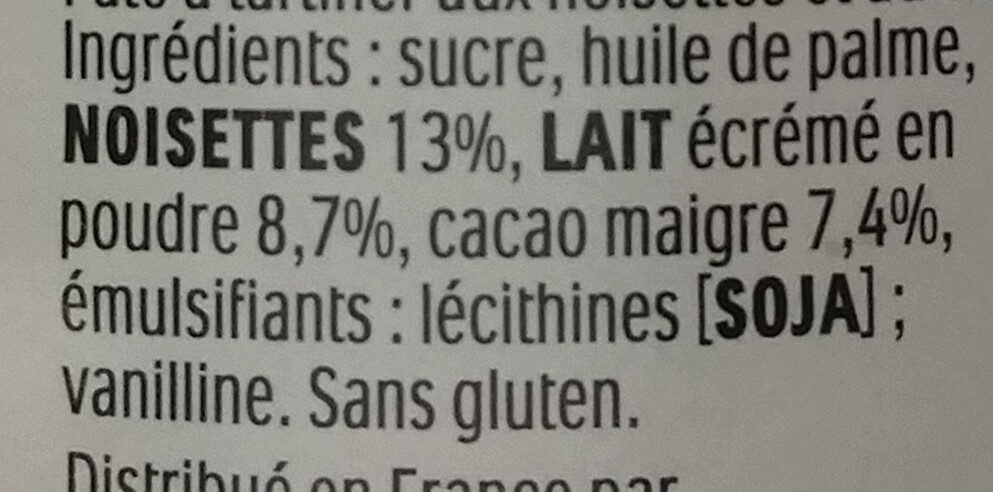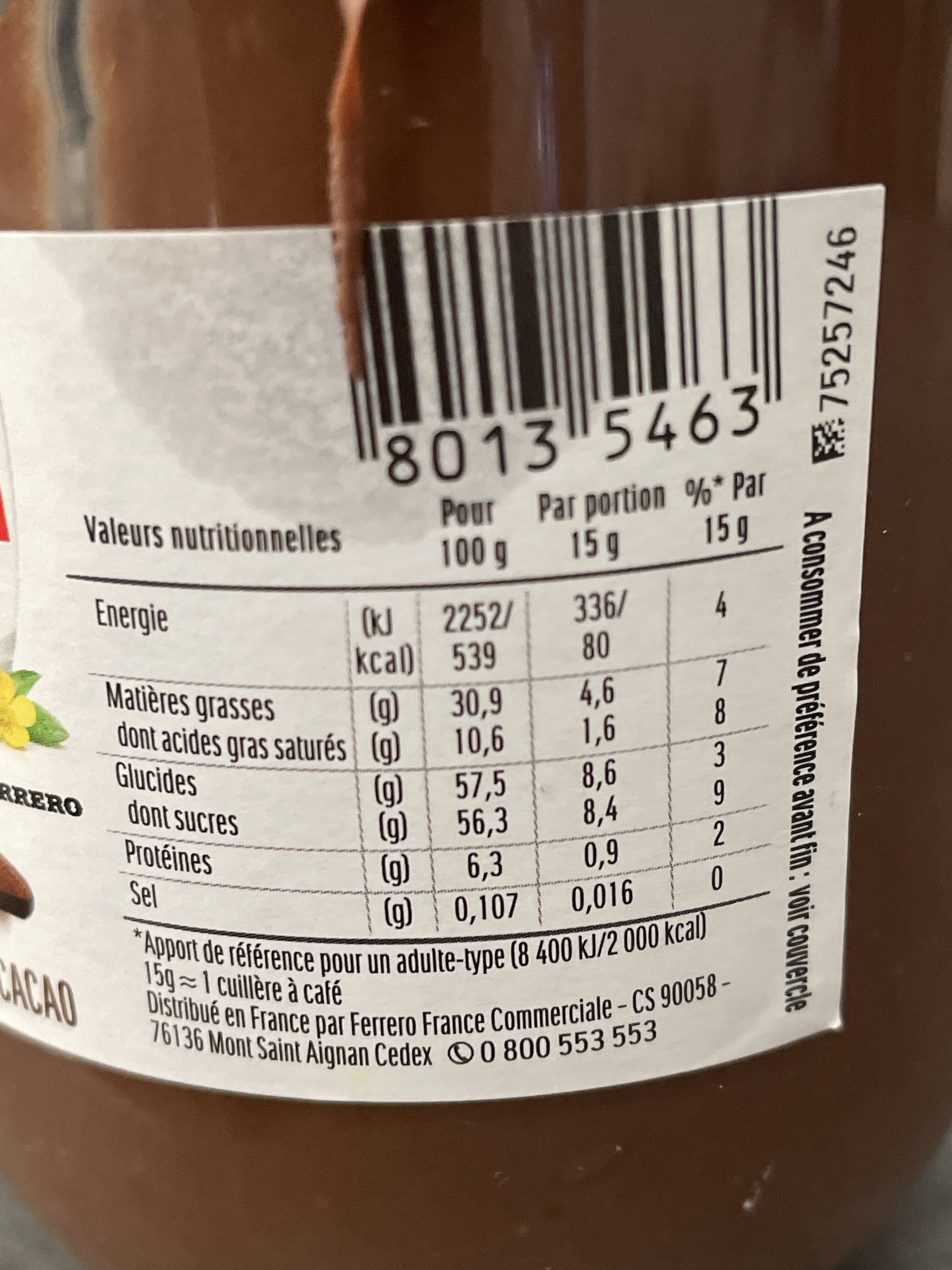Nutella - Ferrero - 200 g
Some of the data for this product has been provided directly by the manufacturer FERRERO FRANCE COMMERCIALE.
Barcode: 80135463
Common name: Pâte à tartiner aux noisettes et au cacao
Quantity: 200 g
Packaging: en:Pot, en:Jar, fr:Couvercle en plastique, fr:Opercule aluminium, fr:Pot en verre
Brands: Ferrero
Categories: en:Plant-based foods and beverages, en:Plant-based foods, en:Breakfasts, en:Spreads, en:Plant-based spreads, en:Sweet spreads, fr:Pâtes à tartiner, en:Hazelnut spreads, en:Chocolate spreads, en:Cocoa and hazelnuts spreads
Labels, certifications, awards:
en:No gluten, en:Green Dot, Triman

Origin of ingredients: en:Unspecified
Countries where sold: An Ostair, A' Bheilg, Bulgàiria, An Fhraing, A' Ghearmailt, An Ungair, An Eadailt, Maroco, A' Phortagail, Romàinia, An Spàinn, An Eilbheis, An Rìoghachd Aonaichte
Matching with your preferences
Other information
Conservation conditions: A conserver au sec et à l'abri de la chaleur. Ne pas mettre au réfrigérateur.
Customer service: FERRERO FRANCE COMMERCIALE - Service Consommateurs, CS 90058 - 76136 MONT SAINT AIGNAN Cedex
Report a problem
Data sources
The manufacturer FERRERO FRANCE COMMERCIALE uses Equadis to automatically transmit data and photos for its products.
Product added on by openfoodfacts-contributors
Last edit of product page on by aleene.
Product page also edited by 5m4u9, alia, annelotte, asmoth, aude-debock, ayyyvocado, bugmenot, charlesnepote, chevalstar, date-limite-app, davidepio, dorado-jerome, driveoff, ecoscore-impact-estimator, emeterio, fabe56, foodless, foodrepo, fpdsurveys, gourmet, iamanouck, inf, insectproductadd, itsjustruby, jitrixis, kch, kiliweb, kyzh, littlejo, mairoluin, mandaz, marcussacapuces91, mihai12321, minu, ngc01, nicolasleger, noahpit10, october-food-facts, openfood-ch-import, org-ferrero-france-commerciale, oskar2233, packbot, prepperapp, quechoisir, roboto-app, scanbot, sebleouf, segundo, smoothie-app, stephane, swipe-studio, tabfalte, tacinte, tacite, tacite-mass-editor, teolemon, thaialagata, torredibabele, traaf, uillaume, vandamme, webwurm, yuka.WDVvNUxmMVkrS2NwaHNJUG9obnU0dng3M0wrN0FXZTJOdElSSWc9PQ, yuka.YjRjckgvMEgvdVlicFBZNnd4cm4xWUplbHBHa2YzMkZjTlVQSWc9PQ, yuka.sY2b0xO6T85zoF3NwEKvlhEcVujUmS_0ag3Rs2uT7P6oCpzkf_hqzK2ka6o, yukafix, zoneblockscommunity.












